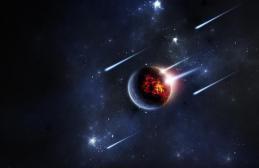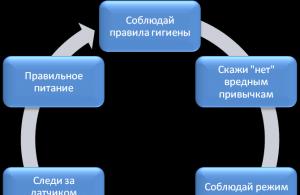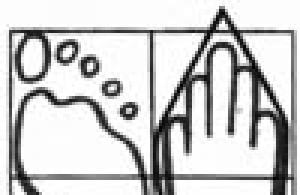Engine problems can ruin any trip. Of course, a car is not a plane. If he suddenly stops, nothing terrible will happen. And in order to deal with the problem in the car, just stop on the side of the road and look under the hood. But sometimes the car has to be sent to a car service. And there, the mechanic will tell the car owner that the cause of the problems with the engine lay literally on the surface, and it could well have been eliminated on its own. But the owner didn't know that. Especially often this situation is observed when the engine suddenly loses power. In this article, we will explain why this can happen and how you can deal with it.
Detection of power reduction in the car
This does not require special skills. It is enough just to observe how the engine behaves in different situations. Here are the main signs of power dips:
- The car does not respond well to pressing the gas pedal, there are delays of several seconds. This can happen both at the moment of starting the movement, and after picking up speed.
- While driving, the engine speed suddenly drops for no apparent reason. Most often this is observed after a set of speeds.
- After pressing the gas pedal, a series of jerks occurs, after which the engine stalls. But if you press the gas pedal harder, the jerks disappear, the engine runs normally.
Checking power indicators on the stands
Sometimes engine problems are not as obvious as shown above. But that doesn't mean they don't exist. Even the power of the motor may decrease after an unsuccessful chip tuning, but this can only be found out with the help of instruments. In such a situation, special equipment is used to check cars: a roller stand and a computer on which specialized software is installed. Such equipment makes it possible to check the parameters of machines whose power reaches 740 hp. from. on the axle. The car is fixed on the stand with a special mount, and its engine accelerates as much as possible. All bench rollers have a brake system that prevents acceleration. As soon as the engine reaches maximum speed, the roller brake system is activated. And the car "rolls freely" until it stops. All this time the computer takes measurements. It captures power losses in the transmission and a number of other parameters. Based on these measurements, the characteristics of the motor are calculated using special formulas and a graph is created that shows how the engine torque and its power depend on the speed. As a rule, there are 4 curves on such graphs. Two show power, two more show engine torque, and 2 curves are necessarily red, and 2 are black. The black curves show the engine torque and power at factory settings. And the red ones show the moment and power after chip tuning (if any). Any power drawdown on a real engine is shown as a drawdown on the graph.
On carbureted engines
- The glow number on the spark plugs used does not match the one specified in the instructions.
- The high-voltage wires leading to the candles are damaged.
- Poor quality of gasoline.
- The air filter is clogged, as a result, the mixture is supplied to the engine without the proper amount of air, and therefore burns much worse.
- The fuel filter is clogged, as a result, the amount of fuel entering the combustion chambers is limited.
- Mechanical problems with the engine itself. Worn piston rings, knocked down valve clearances, etc. All this leads to a decrease in compression and power.
- Carburetor chokes do not open wide enough.
- The economizer valve has worn out and started to stick.
- The float in the carburetor is defective, as a result, the fuel level may either be too high or, conversely, too low.
- The throughput of carburetor channels and jets has deteriorated. This is mainly due to blockage or poor carb settings.
On injection
- The ECU (i.e., electronic control unit) of the car intermittently fails.
- The outer screen of the fuel pump is dirty.
- One or more nozzles clogged.
- The sensors directly related to the operation of the engine failed.
- The car's lambda probe is out of order.
- In injection engines, mechanical problems, problems with spark plugs, problems with high-voltage wires, which have already been mentioned above, are also possible.
On diesel
Some of the causes of power dips listed above apply to diesel engines as well. But diesels are also associated with a number of specific points that should be mentioned. One of the most common causes of power failure in a diesel engine is the failure of the turbocharger. When this unit fails, it, as a rule, begins to emit a characteristic whistle, which is difficult to confuse with something. But in order to establish the breakdown accurately, you will have to send the car to a car service. There it will be scanned and the problem will be identified. Why can turbocharging turn off? Here are some options.
- The charge air pressure sensor has failed.
- The turbine has simply exhausted its factory resource.
- The tightness of the joint between the compressor and the motor is broken.
- The air path is clogged.
- There was a coking of the turbocharger axis, as a result of which its rotation slowed down.
- The turbocharger shut-off valve failed.
A characteristic external sign of a compressor failure is blue smoke coming out of the exhaust pipe. It occurs due to the burning of oil, the excess of which enters the combustion chambers of the cylinders due to leaks in the compressor. If the tightness of the compressor discharge line is broken, air is sucked in, the mixture becomes too rich. When it burns out, not blue, but black smoke comes out of the pipe. Finally, white smoke indicates that the oil line that drains oil from the compressor is clogged.
Power drops due to clogged catalytic converter
There are several signs that make it possible to understand that the problem is in the catalyst. Here they are:
- From the moment of start, the car goes with difficulty and reacts badly to pressing the gas pedal. But after a while, the engine seems to have a second wind, the problems disappear, and it starts to work normally.
- The loss of power builds up gradually: at first the car travels at a speed of 120 km/h, then the speed drops to 100 km/h, and then the engine can hardly accelerate to 90 km/h.
- The most difficult case: the engine starts and immediately stalls. Or it doesn't start at all.
There are many reasons why a catalytic converter can become clogged. We list the most common:
- Due to malfunctions in the fuel system, the exhaust of the car contains too much oil, which leads to clogging. The problem manifests itself much faster if the throughput cells of the catalyst are very small. In this case, to score them, a few drops of oil are enough, which, having fallen on them, are literally welded.
- Poor fuel quality. If the fuel is bad, it often cannot burn completely, and its unburned residues can cause overheating in the catalyst, and then partial melting.
- Mechanical damage. A flying stone, an unsuccessful hitting a speed bump or a curb - all this can damage the catalyst, and its "stuffing" is very fragile. Honeycombs break, their fragments get stuck in the holes of other honeycombs, which causes clogging.
Self troubleshooting
It is possible to eliminate power failures on your own only when the causes that caused the failures can be easily eliminated even by a novice motorist.
- If it turned out that there are candles with the wrong glow number in the car, then it is quite possible to buy and install new candles, after specifying the correct glow number in the instructions.
- If the gaps between the spark plug electrodes are clogged, and so-called jumpers have formed on them, then they can be completely eliminated with a piece of coarse sandpaper.
- You can also inspect and, if necessary, replace damaged high-voltage wires yourself.
- Cleaning the fuel filter mesh in most cases is also not difficult. As a rule, for this it is enough to unscrew a few screws that hold the filter cover.
- You can also replace a clogged air filter yourself. But before going to the car shop, you should still look into the operating instructions for the car to clarify the parameters and brand of the filter.
In all other situations, you can not do without the help of a qualified mechanic. The car will have to be driven to a car service, since a novice car enthusiast will do more harm than good with his actions.
The worst thing about power dips is that they can be caused by a huge number of things. And it can take a very long time to identify the real cause of failures, much longer than the repair itself. Therefore, the most reasonable way out is to entrust the search for causes to professionals. They have not only the necessary experience, but also a lot of special equipment. An exception can only be the cases indicated above, when the cause of the malfunction lies on the surface.
An article about a drop in car engine power - signs of a problem, the causes of a decrease in power and how to fix them. At the end of the article - a video about the reasons for the drop in engine power.

The content of the article:
In the course of daily operation, the technical condition of the car gradually deteriorates, and here, unfortunately, there are absolutely no exceptions. The reason for this is the ever-increasing mileage, as well as the irreversible process of wear of the main components, assemblies and assemblies, which, even with proper and timely maintenance, sooner or later begin to fail, break down or simply fail.
As practice shows, most often motorists are faced with problems associated with engine malfunctions, and one of the most common of them is a decrease in engine power.
As a rule, problems with the fact that the engine power has dropped arise suddenly - just yesterday the car showed confident acceleration and easily climbed the steepest hills, and today it requires constantly spinning the engine to high speeds in order to maintain the previously accustomed pace, slowly accelerates and with copes with even small loads with difficulty. The main reason that the engine power has fallen, experts call the power unit power drop, which can be caused by a variety of malfunctions. Be that as it may, it is necessary to eliminate the malfunction as soon as possible, otherwise it can turn into very serious consequences, fraught with lengthy and costly repairs.
The main signs indicating a loss of power

If you notice that the car has become noticeably slower to accelerate, and its optimal speed has decreased by 15-20%, you should know that these are one of the most obvious signs that indicate a drop in the power of the power unit. In addition, a number of secondary signs should not be ignored, which can also notify the car owner of existing problems with engine revs. Among them:
- The appearance of black, white or any other unusual shade of smoke coming from the exhaust system;
- The appearance of "terry" soot on spark plugs;
- Unstable operation of the engine at idle;
- A sharp and, at first glance, unreasonable increase in fuel and oil consumption.
Reasons for reducing engine power and how to eliminate them

Of the variety of reasons that cause a drop in the power of a car's power plant, we have selected the most common ones, and also prepared a number of recommendations for their elimination:
- DKPV malfunction. There are cases when the crankshaft position sensor does not send a command to start supplying the air-fuel mixture in a timely manner, as a result of which a decrease in ICE power may be observed. The cause of the malfunction may be the delamination of the damper or the displacement of the toothed star. To fix the problem, you need to replace the damper.
- Increase / decrease the distance between the electrodes of the candles. During the operation of the machine, the distance between the electrodes of the candles may change, which can be identified and eliminated by simply measuring and adjusting the gaps.
- Breakdowns or deposits on the spark plugs, which can cause a decrease in engine power. You can identify a failed spark plug using a special stand, and then replace it.
- Clogged air or fuel filter. In both the first and second cases, cleaning the filter or completely replacing it can help.
- Low pressure in the fuel pump. You can identify this malfunction by taking special measurements, as well as checking the quality of the functioning of the fuel pump filter. To solve the problem, it is necessary to clean or replace the fuel pump filter, or replace the pump completely.
- Failure of the knock sensor. In the event of this malfunction, the internal combustion engine malfunction indicator lights up on the dashboard without fail. To fix the problem, it is recommended to restore the integrity of the contact group, as well as install a new sensor.
- Depressurization of the exhaust system, which is quite simple to identify by examining the main components during the operation of the internal combustion engine at medium speeds. The solution to the problem is to replace the exhaust manifold gasket and broach all the seals.
- Problems in the operation of the electronic control unit (ECU). In most cases, the ECU is highly reliable and durable, but there are cases of its complete breakdown or a banal software failure. You can fix this malfunction by reinstalling the software or completely replacing the computer.
- Camshaft cam wear. You can identify the problem by visually inspecting the element, and fix it by replacing the camshaft with a new one.
- Failure of the oxygen sensor, which is accompanied by the ignition of the "Check engine" light on the instrument panel. In this case, it is necessary to check the integrity of the heating coil, as well as measure the resistance force and the output voltage. The problem is solved by repairing the sensor, restoring the quality of the wiring and cleaning all the holes through which air is sucked.
- Malfunction of the throttle position sensor, which is also accompanied by the "Check engine" lamp on. You can fix the problem by cleaning the throttle assembly and restoring the integrity of the contacts, as well as by completely replacing the sensor, in case it fails.
- Contamination of the catalyst or exhaust system, which is recommended to be eliminated by a complete replacement of the component. At the same time, you should be prepared for the fact that replacing the catalyst will cost a tidy sum, which is to blame for the presence of a certain amount of noble metals in it.
- Mechanical problems with the motor, which can only be identified by contacting specialized service stations, where specialists will make all the necessary diagnostics. In this case, you should be prepared for the fact that the problem of power reduction may be the end of the engine's life, which threatens its costly overhaul or replacement.
- Absence of vacuum in the intake manifold, which can be restored by installing new gaskets between the manifold and the engine.
- Incorrect adjustment of the motor, which most often occurs when adjusting the gaps between the valves on your own, so if you are not an expert in this field, it is better to entrust the adjustment of the engine to specialists.

After the reasons for the drop in ICE power have been identified and the problems have been eliminated, you can think about increasing and restoring the former output of the power plant, for which quite simple, but no less effective methods can be useful, including:
- The use of fuel having a higher octane number, which will achieve more power in the explosion of gases.
- The use of a special Suprotec lubricant, which allows you to restore heavily worn metal surfaces.
- Replacing the standard air filter with an improved one, which will provide a significant increase in ICE power.
- The direct flow installation, which is so loved by the owners of domestically produced cars, which, on the one hand, will increase the output of the engine, and on the other hand, will reduce the acoustic comfort when driving.
As a conclusion
Every year, cars are becoming more technologically advanced and literally stuffed with electronics, which makes it impossible for them to self-diagnose and eliminate the identified malfunctions. Therefore, if you do not have the proper skills and knowledge, it is better to entrust the repair of your “iron horse” to professionals, which will save not only your strength and nerves, but also money.
The reasons for the drop in engine power - in the video:
As a rule, during operation, any power unit becomes less productive as it wears out naturally. At the same time, the loss, even on engines with solid mileage, usually averages about 10% of the declared passport. Naturally, the driver hardly notices such a decrease in performance.
However, if the engine thrust is lost, the engine loses throttle response at the moment you press the gas pedal, then it becomes difficult and even dangerous to operate such a power unit, and the problem itself needs to be addressed. In parallel with this, the owner may notice that the engine is hard to start, both cold and hot. It may also appear in different operating modes of the power unit (idling, smoking under load, etc.)
Read in this article
The engine stopped pulling, there is no throttle response of the internal combustion engine: the most common malfunctions

Let's start with the fact that an experienced motorist knows his car and its "character" well (acceleration dynamics, maximum power revolutions and revolutions, etc.). It is quite obvious that a drop in power usually immediately becomes noticeable and is a reason for diagnosis.
As for the reasons, there are a lot of them, but in each case there is a loss of engine power and a deterioration in its throttle response. Also, among the additional indirect signs, it is worth noting that the motor may be unstable, troit and smoke.
So, a decrease in traction is often caused by the following reasons:
- Outside air temperature. It is especially strongly felt on simple small-capacity 3 or 4-cylinder engines (usually) with up to 1.5 liters on budget cars.
For example, in extreme heat, many owners of such cars note that the car “does not drive”, the dynamics drop, you need to press the gas pedal harder and spin up to higher speeds to maintain the usual driving pace.
Simply put, the volume of hot air from the atmosphere in the engine is reduced, resulting in poorer thrust. Note that this cannot be considered a breakdown. After the outside temperature drops, everything will return to normal.
- Poor quality fuel, does not match the octane number of gasoline, etc. Simply put, engine response can noticeably deteriorate immediately after refueling at a gas station. In this case, power is reduced, problems may arise with starting the internal combustion engine, etc.
In some situations, you just need to dilute the fuel with better quality, in others, you need to completely drain the fuel from the tank. The most problematic situation can be considered the need not only to drain the fuel, but also to flush the engine power system.
- Air filter dirty. If the specified filter is clogged, then the engine is not getting enough air. As a result, there is not enough oxygen for the full combustion of the entire volume of fuel supplied. In other words, the fuel charge does not give the maximum of its energy to the piston.
In such a situation, the engine not only does not pull, but also smokes. Solving the problem is simple - it is necessary, and you can do such a replacement yourself.
- Dirty or damaged spark plugs. It is important to consider that these elements on gasoline engines are a "consumable". If we also take into account the poor quality of domestic gasoline, then you should not rely heavily on a large declared resource.
As practice shows, it is advisable to change ordinary single-electrode candles every 15 thousand km. As for the more expensive multi-electrode analogues or products with platinum or iridium electrodes, the manufacturer of these or those candles.
Also, contamination of the electrodes, the appearance of soot and plaque, a change in the gap between the electrodes, etc. can also lead to malfunctions in the operation of spark plugs. In this case, the gap must be set and the candles cleaned.
If the candles are old or dirty, and also selected incorrectly for a particular internal combustion engine, then the process of ignition of the mixture of fuel and air in the cylinders is disrupted, engine detonation may occur, etc. The motor in such conditions loses throttle response, it may not start well.
First of all, if the candles are new, you need to find out what leads to their rapid contamination. If the spark plugs simply have not changed for a long time, then it is necessary to install a new set on the engine. Also noteworthy is the setting of the ignition system, armored wire, coil, correctly set UOZ (ignition advance angle), etc.
- Fuel system. As with the air supply system, fouling of the fuel system results in insufficient fuel being supplied to the engine. In such a situation, the working fuel-air mixture is very "poor", that is, there is a lot of air in the mixture, but little fuel.
Usually, a clogged fuel filter is a common cause, which, on the recommendation of experts, is also desirable to change every 15-20 thousand km. You also need to add that it is periodically necessary or, since contaminated jets or nozzles may well cause a clear lack of fuel in the engine.
It should also be separately noted that a decrease in performance can be attributed to frequent causes of loss of engine thrust. On carbureted internal combustion engines, it is easier to diagnose the problem, so the device is located in plain sight.
However, on engines with an injector, you need to separately check the electric fuel pump, which is located in the fuel tank. Also, in some cases, it should be changed or after removing the device.
- Issues in the exhaust system. Not everyone knows that severe pollution of the exhaust system also leads to the fact that the engine response drops. This is especially true for injection cars with a catalyst.
This element is a filter through which the exhaust gases pass for purification. If the throughput of the catalyst is reduced, then the engine “suffocates”, the power naturally drops, and traction deteriorates.
The most correct way to solve this problem is to replace the catalyst with a new one, however, it should be taken into account that this element is very expensive. For this reason, the practice of removing the catalyst is common in the CIS.
Note that it is not possible to successfully cut out the catalyst on all cars, but if all the work is done correctly, then the engine is working normally. At the same time, the main disadvantages are that additional noise appears in the exhaust system, the car begins to heavily pollute the environment, the smell of exhaust gases is constantly present during engine operation, etc.
- Engine wear or damage to internal combustion engine parts and assemblies. This situation is the most problematic, since the cause of a decrease in traction and throttle response is an engine breakdown. As a rule, we are talking about the appearance of scoring on the cylinder mirror, severe wear and problems with timing valves, etc.
In this case, not in all cases it is worth immediately setting yourself up for the engine. Everything will depend on the state of the power unit. Sometimes it is enough to replace the piston rings, etc.
After a series of manipulations, such a motor can still be “revived” and further operated. In any case, one should not draw any hasty conclusions until the moment when a comprehensive diagnostics and troubleshooting of the engine is carried out in case of its disassembly.
- We also note that, both in the case of carburetor and injection engines, it is necessary to exclude the possibility of excess air being sucked in at the intake, as well as fuel leaks or.
Such malfunctions lead to a violation of mixture formation, the composition of the working mixture (the ratio of fuel and air) changes, as a result of which such a mixture may not correspond to the operating mode of the engine.
If the injection engine has lost throttle response: what to consider

With carbureted engines increasingly receding into the background, let's focus on the problems of injection engines that have and are equipped with electronic injection.
The fact is that on such cars the problems should be divided into two groups:
- mechanical failures;
- electronic and electrical failures;
The ECM itself is actually a set of electronic sensors that send signals to, after which the control unit sends commands to the actuators.
In this case, failures in the operation of one of the sensors can significantly affect the operation of the motor. For example, an incorrect signal from an oxygen sensor (lambda probe) or its failure will cause the computer to also receive incorrect information. The same thing happens when, for example, it fails or does not work correctly.
Then, based on erroneous data from one or another sensor, the unit begins to "prepare" the fuel-air mixture, which in fact will not correspond to the engine operating modes.
Quite often, the motor loses power, malfunctions, goes into emergency mode, throttle response and traction deteriorate, the unit smokes, etc. precisely for these reasons. To solve the problem and pinpoint the fault, perform.
Summing up
As you can see, there are a lot of possible reasons for the deterioration of engine response and loss of traction. At the same time, it is more difficult to diagnose an injection engine compared to a carburetor internal combustion engine.
If we summarize the information received, then on engines with electronic injection at the initial stage:
- the fuel and air filter is checked for contamination;
- if necessary, the injector is cleaned, the spark plugs are replaced, etc.;
- then the fuel pump is diagnosed, it is worth checking in parallel;
- then computer diagnostics of the car is performed;
In any case, if you notice that the car's engine is not as responsive as before, it is better to immediately make a comprehensive diagnosis. After the cause of the decrease in traction has been determined, the problem must be quickly and efficiently eliminated, which will avoid more serious consequences.
Read also
The reasons why, after pressing the gas pedal, dips occur and the engine starts to choke. Engine failures with HBO when switching from gasoline to gas.


I welcome you friends to the DIY car repair site. A good car enthusiast knows the capabilities of his "horse" and its potential on the road. That is why any drop in engine power immediately catches the eye.
Another thing is that it is not so easy to determine the cause of this phenomenon. In this article, we will consider the problem from all sides and highlight the main causes of engine power loss.
Common engine power loss problems
In most cases, a decrease in traction is caused by the following reasons:
1. Poor fuel quality. If the car lost its power immediately after leaving the gas station, then the cause of the problems is the poor quality of gasoline. The result is a loss of power when the engine is hot. In the worst case, there are problems with the plant of the power unit.
The only way out in this case is to completely drain the old and fill in new fuel. If this is not done, then you can completely ruin the power unit.
The main symptom of bad gas is not only the loss of engine power. Often the problem pretends to be difficulties with starting, the appearance of soot on the contact group of candles and a reddish coating on their “skirts”.
2. Clogged air filter. Often the engine does not develop full power for a simpler reason - due to pollution. air filter . It is easy to explain this - the air-fuel mixture enters the engine without a sufficient amount of air, which worsens the quality of its combustion. As a result, the agility of the power node also falls.
The easiest way to solve the problem here is to install a new filter element. As a rule, it costs mere "penny", and you can make a replacement yourself and without involving expensive specialists.
3. Dirty or old spark plugs. If you have not changed the spark plugs in the engine for a long time, then you should definitely do it. Dirty electrodes on spark plugs, excessive wear, gap changes - all this can affect the quality of ignition and the efficiency of combustion of the air-fuel mixture.
In this case, you need to do two things - figure out what are the reasons for the contamination of the candles (if they have changed recently) and install new ones.
4. Clogged fuel filter. Some beginners are not even aware of the existence of such a device. In fact fuel filter plays a key role in engine performance.
If the device is clogged with various "garbage", then a limited amount of fuel will flow to the engine. The result is a sharp decrease in power. In this case, the best solution is the usual replacement of the fuel filter.
5. Problems with the engine on the mechanical side. In the worst cases, the reason for the decrease in power is a malfunction of the power unit itself - a decrease in compression, wear of piston rings, a change in valve clearance, and so on. In such situations, you can not do without a trip to the specialists and engine repair.
6. Fuel system. Another reason for reducing the thrust of the power unit is a malfunction in the fuel supply system. Here we are talking about a whole group of problems:
- Oxygen sensor malfunctions or injector;
- fuel pump failure. For example, due to the low quality of fuel or the retraction of gasoline from the bottom of the tank (this is where most of the dirt settles);
- depressurization of pipes and hoses through which fuel is supplied, and so on.
7. Contamination of the catalyst and exhaust system also one of the reasons for reducing the thrust of the power unit. To eliminate the problem, it is necessary to replace the catalyst. At the same time, you need to be prepared for certain expenses, because such a detail can be very expensive.
Loss of engine power on the injector and carburetor
When looking for a reason for reducing the thrust of a power unit, one must take into account the type of the engine itself - carburetor or injection.
Consider the probable malfunctions for each of the options:
1. The loss of power of the injection engine may be caused by the following reasons:
- Air or fuel filter contamination;
- low pressure, which is created by the fuel pump;
- contamination of the fuel pump grid;
- malfunctions of the car ECU;
- nozzle contamination;
- breakdown of the main sensors associated with the operation of the power unit;
- failure of the fuel pressure regulator;
- malfunction lambda probe etc.
2. With a decrease in the power of the carburetor engine, the reasons may be as follows:
- Dirty fuel pump fittings or low pressure;
- carburetor contamination or needle valve problems;
- errors in the regulation of the composition of the air-fuel mixture;
- insufficient opening of the carburetor dampers;
- economizer valve sticking;
- decrease or excessive overestimation of the fuel level in the engine (may be caused by a malfunction of the float element);
- deterioration in the throughput of jets and carburetor channels, and so on.
When the first problems with the traction of the power unit appear, it is necessary to make a complete diagnosis, determine the cause of the malfunction and be sure to eliminate it. Otherwise, the consequences can be the most unpredictable. Good luck on the road and of course no breakdowns.
During the operation of the car, many owners face a number of problems. One of them is a decrease in engine power. At the same time, it is not always clear what is the reason for this phenomenon, what measures to take, whether it is worth going to the service station. Let's talk about the main reasons why the engine does not pull and how you can fix the problem on your own.
As a rule, during operation, any power unit becomes less productive as it wears out naturally. At the same time, the loss of power, even on engines with solid mileage, usually averages about 10% of the declared passport. Naturally, the driver hardly notices such a decrease in performance.
However, if the engine thrust is lost, the engine loses throttle response at the moment you press the gas pedal, then it becomes difficult and even dangerous to operate such a power unit, and the problem itself needs to be addressed. In parallel with this, the owner may notice that the engine is hard to start, both cold and hot. Smokey engine exhaust may also appear in different operating modes of the power unit (idling, smoking under load, etc.)
The main reasons for reducing engine power
1. Malfunction of the crankshaft position sensor
There are situations when the DKPV does not send a control command to supply the air-fuel mixture in a timely manner. As a result, the power of the power unit drops before our eyes. The main reason for the failure is the shift of the gear star in relation to the pulley and the bundle of the damper. In such a situation, it is necessary to carefully inspect the damper and replace it.
2. Increase (decrease) the gap between the electrodes of the candles
During operation, due to the powerful temperature effect, the distance between the electrodes of the spark plug may decrease or increase. To exclude or confirm your suspicion, you need to check the size of the gaps with a round feeler gauge. If the distance is less or more than the allowable, you need to adjust by bending the side of the electrode or replace the spark plug. As for the optimal distance of the spark gap, it can be different (depending on the type of candle) - 0.7-1.0 mm.
3. The appearance of soot on candles is another clear sign of a problem.
If the engine does not pull well, it is necessary to unscrew all the spark plugs one by one and inspect them. If obvious carbon deposits appear on the electrodes, the device must be cleaned with a brush with a metal bristle. It is important not only to clean the candles or replace them, but also to find out the cause of this phenomenon.
4. Failure of spark plugs
Reduced engine power may be caused by product failure. In this case, it is necessary to check the performance of the candle on a special stand. If the suspicions are confirmed, then the only way out is to replace the set or one candle.
5. There is no gas in the tank
You can diagnose the problem by looking at the fuel gauge. If it is faulty or there is a suspicion of its “inadequacy”, then the presence of fuel can be determined by removing the fuel pump.
6. Fuel filter contamination, water freezing in the system, fuel wire pinching, fuel pump failure
All these malfunctions can be safely attributed to one category, because they all have the same symptoms - the starter cranks the engine, but there is no smell of fuel from the exhaust pipe. If the car is carbureted, then the cause must be sought in the float chamber. Most likely it is not getting fuel. In the case of an injector, the presence of fuel in the rail is easier to check by pressing a special spool (installed at the end of the rail).
To correct the problem, it is necessary to warm up the engine thoroughly and bleed the power system with a tire pump. After that, all the pipes of the system, hoses and the fuel pump itself are changed.
7. The fuel pump creates too little pressure
Such a problem can only be determined by special measurements (made directly at the outlet of the fuel pump). After that, the quality of the fuel pump filter is checked.
The solution is to clean the fuel pump filter, replace it (if repair is not possible) or install a new fuel pump.
8. Poor contact quality in the circuit
Poor quality of the contact in the circuit through which the fuel pump is powered or the failure of its relay. The first thing to do to check is to make sure the quality of the "ground" on the car and take resistance measurements with a multimeter. If the resistance level is really high, then the only way out is to strip the contact groups, crimp the terminals well or install a relay (if the old one is faulty).
9. Broken nozzles or malfunction in the supply system
 If there is a suspicion of failure of these elements, it is necessary to check the resistance of the windings with a multimeter for the fact of an open circuit or an interturn circuit. If the cause of the problem is a malfunction of the computer, then such a check can be carried out exclusively at the service station.
If there is a suspicion of failure of these elements, it is necessary to check the resistance of the windings with a multimeter for the fact of an open circuit or an interturn circuit. If the cause of the problem is a malfunction of the computer, then such a check can be carried out exclusively at the service station.
There are several ways to eliminate the decrease in engine power for this reason (depending on the depth of the problem) - install a new computer, clean all nozzles, ensure high-quality contact in the electrical circuit, and so on.
10. Breakdown of the DPKV
Breakage of DPKV - crankshaft position sensor or damage to its circuit. In such a situation, the check engine malfunction lamp lights up. The first thing to do is to inspect the integrity of the DCPV itself, make sure that the gap between the ring gear and the sensor is normal (it should be about one millimeter). The normal resistance of the sensor coil is about 600-700 ohms.
To solve the problem, it is enough to restore normal contact in the electrical circuit and install a new sensor (if the old one turned out to be faulty).
11. Out of order DTOZH
DTOZH - a sensor that controls the temperature of the coolant is out of order. Symptoms of a malfunction are as follows - the engine malfunction lamp lights up. If there is a break, then the electric fan of the system begins to rotate continuously. In addition, it is necessary to check the health of the sensor itself.
If the engine power has dropped for this reason, then it is necessary to restore the quality of the contact in the electrical circuit and install a new sensor.
12. Out of order TPS
The TPS is out of order - a sensor that controls the correct position of the throttle valve (or its chain). As in previous cases, the “Check engine” lamp lights up here. If there is an open in the TPS circuit, then the engine speed usually does not drop below one and a half thousand revolutions.
The solution to the problem is to clean the throttle assembly and restore the quality of the contact connection in the entire electrical circuit. If the sensor is defective and cannot be repaired, it must be replaced.
13. Out of order DMRV
The DMRV, a sensor responsible for controlling mass fuel consumption, failed. Here, the optimal action is to check the integrity of the DMRV or replace it with a serviceable device. If the failure of the DMRV is confirmed, then it is necessary to make an attempt to clean it, and if it is impossible to repair, simply replace it.
14. Breakage of the knock sensor
Detonation sensor failure. With such a malfunction, the engine malfunction lamp necessarily lights up on the instrument panel. In addition, when DD detonation fails, there is no detonation in any of the operating modes of the power unit and the engine power also drops. With such a problem, the best option is to restore the integrity of the contact group in the electrical circuit and install a new sensor.
15. Failure of the oxygen sensor
Failure of the oxygen sensor or a violation of its circuit. Such a malfunction is characterized. In this case, the first thing to do is to check the heating coil for integrity. Firstly, the resistance is measured, and secondly, the voltage level at the output. Measurement can be done even without breaking the circuit - just pierce the insulation with needles.
To eliminate the malfunction, it is worth repairing the oxygen sensor, restoring the quality of the wiring and cleaning all the holes through which air is sucked in. In extreme cases, it is necessary to replace the oxygen sensor itself.
16. Depressurization of the exhaust system
Diagnosing such a problem is simple - just inspect the main elements while the engine is running at medium speeds. To solve the problem, it is necessary to replace the exhaust manifold gasket and stretch all the seals.
17. Computer failure
Failure of the electronic control unit (ECU). Despite its reliability, the ECU can also break down (sometimes its software just gets lost). To make sure that the computer is working (failure of the computer), you need to check the voltage on the unit itself (the normal parameter is about 12 Volts) or replace it with a known-good unit. If the control unit is defective, it may need to be replaced. In some cases, it is enough to change only the wiring.
18. Violation of the adjustment of clearances in the valve drive
You can make sure that the parameters match only by checking with special probes. If the gaps do not correspond to the norm (written in the manual), then adjustments must be made.
19. Deformation or breakage of the springs on the valves
In this case, you will have to remove the cylinder head and measure the length of the springs under load and in a free state. If broken or deformed springs were found, then they need to be changed.
20. Worn camshaft lobes
Here it will be enough to visually inspect (after removing the necessary elements) and replace the camshaft if necessary.
21. Disordered valve timing
In such cases, it is necessary to check the fact that the marks on the camshaft and crankshaft coincide. If there is an “imbalance”, then it is enough to set the correct position using special marks.
22. Low cylinder compression
Low compression in all or some cylinders. Causes include likely valve damage or wear, broken or sticky piston rings. To verify the suspicions or refute them, it is enough to make the necessary measurements. If the suspicion is confirmed, then it is necessary to repair the power unit - change the rings, pistons or repair the cylinders.
Output
The above list is only a part of the malfunctions, due to which the engine power drops. But in most cases, this is enough to diagnose the problem, fix it, and return much-needed traction to your “iron horse”.
Quite often, the motor loses power, malfunctions, goes into emergency mode, throttle response and traction deteriorate, the unit smokes, etc. precisely for these reasons. To solve the problem and pinpoint the fault, computer diagnostics of the engine should be performed.









